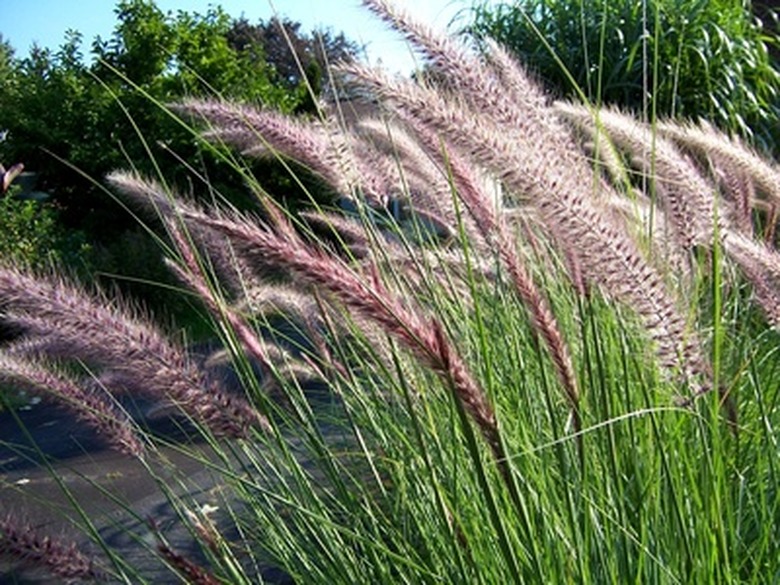How To Keep Ornamental Grasses From Getting Too Big
Things Needed
- Protective clothing (long sleeves and pants)
- Gardening gloves
- Protective eyewear
- Twine
- Pruning loppers
- Chainsaw (optional)
- Hedge shears (Optional)
- Shovel
- Peat moss/compost
- Mulch
Ornamental grasses dot the landscape of homes and businesses as a versatile ornamental plant. The simplicity of ornamental grasses allows for minimal upkeep and a stunning foliage display. Ornamental grasses grow quite large if left unchecked. This excessive growth causes problems of encroachment on other plants and dead spots inside the grass clump. Addressing these problems limits plant size to keep ornamental grasses from getting too big.
Step 1
Protect your arms and legs from sharp grass blades with appropriate clothing. Some varieties of ornamental grasses such as miscanthus and pampas have razor sharp edges. Wear protective gloves and eye wear when using engine-powered trimming tools.
- Ornamental grasses dot the landscape of homes and businesses as a versatile ornamental plant.
Step 2
Tie a length of twine around the grass bunch at a height 12 inches above the soil level. Place another length of twine 2 feet above the first rope to secure the upper grass blades. Containing the plant within twine makes pruning easier and more uniform.
Step 3
Use pruning loppers, hedge clippers or a chainsaw to lop off the dead growth 6 inches from the garden surface. Use gloves to pick out dead foliage buried in the center of the plant. Larger ornamental grass clumps often feature a dead center that indicates the need for division.
Step 4
Dig around the grass clump to a depth of 6 to 8 inches to allow free root growth. Remove the entire clump from the ground and tip it sideways. Place the shovel blade in the center of the plant and press down firmly to slice the clump in half. Continue dividing the plant in this manner until each clump reaches a manageable size.
- Tie a length of twine around the grass bunch at a height 12 inches above the soil level.
- Use pruning loppers, hedge clippers or a chainsaw to lop off the dead growth 6 inches from the garden surface.
Step 5
Throw a few handfuls of peat moss or compost into the original planting hole and replace one clump of grass in the initial planting site. Firm the soil, water thoroughly around the plant base, and apply a 2-inch layer of mulch. The plant will rebound and eventually require future division.
Step 6
Select sites for the remaining clumps of ornamental grass. Cultivate the soil to an 8-inch depth and incorporate organic material. Plant each clump to allow plenty of room for mature ornamental grass size. Fill in around the base of the grass with loose soil, water deeply, and add mulch to conserve water.
- Throw a few handfuls of peat moss or compost into the original planting hole and replace one clump of grass in the initial planting site.
- Firm the soil, water thoroughly around the plant base, and apply a 2-inch layer of mulch.
Tip
Monitor ornamental grass health a few times each year. Signs of excessive growth include grass blades that fall to the ground or dead centers of the plant. Always allow plenty of room for mature growth to limit the need for constant transplant.
